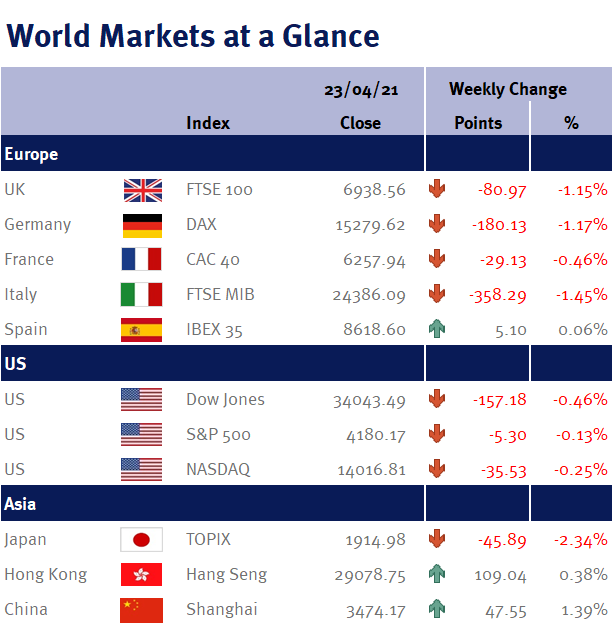On a positive note, economic data this week showed that the global economic recovery continues to build.
In the UK, PMI readings surged in April, with the manufacturing reading of 60.7 (up from 58.9 in March), while the services measure grew to 60.1 from 56.3 – and given lockdown restrictions weren’t eased until 12 April 2021, we believe these data readings probably underestimate the UK’s actual economic recovery.
It was a similarly positive story in Europe: not only did manufacturing expand to 63.3 (which is its fastest expansion since records began in June 1997), but the services reading also rose to 50.3 from 49.6 – and as we have previously stated, 50 is the line separating expansion and contraction, which suggests to us that the Eurozone’s economy is finally turning a corner.
In the US, the weekly initial jobless claims fell 39,000 to 547,000 (its lowest reading since the coronavirus outbreak). More importantly, both Texas and New York contributed the most to the fall on a non-seasonally adjusted basis at 23,357 and 17,316 respectively – and this is especially noteworthy as these are the second and third largest US states in terms of GDP. In fact, if both Texas and New York were individual standalone countries, they would both rank in the top 10 largest economies in the world (as they are bigger than the likes of Canada and Russia).
Looking ahead to this week coming, we have an alphabet soup of economic data including: US and Eurozone Q1 GDP; US PCE (the Fed’s preferred inflation measure); Eurozone CPI inflation; Chinese PMI; US durable goods orders; and Japanese industrial production.
Additionally, both the Fed and BoJ have monetary policy meetings.
Investment Management Team


